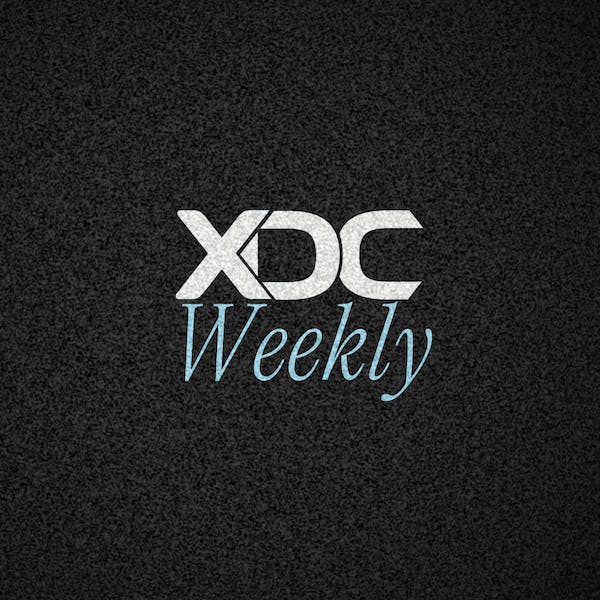XDPoS 2.0 is Blockchain 4.0
Late last year, news of the XDPoS 2.0 protocol enhancement was met with enthusiasm from members of the XDC community, but its significance was not totally realized. In fact, most who welcomed the new proof of stake protocol were under the impression that it was released in December of 2021 as part of the Andromeda XDPoS update. While this update did improve security and efficiency, while also adding new functionality, it was not a major innovation to the blockchain network — at least not compared to what is on the horizon.
In reality, XDPoS 2.0 is a major milestone, by far the most intricate upgrade since the XDC Network’s inception — as evidenced by the full year of beta testing required before the new protocol is set to be implemented in the first quarter of 2023.
While daily life in the metaverse has yet to come to fruition and so far we have managed to escape full-scale cyberwars, we do live in a world increasingly dependent on computer technology. Blockchain — being one of the most secure ways for people to more efficiently store and exchange data, assets and ideas — is positioned to be a big part of our future.
We cannot prevent bad actors from trying to manipulate the array of the cyber networks that support our 21st century lifestyles, but the systems people rely on must stay ahead of these increasingly sophisticated wrongdoers. Look no further than the hackers who brought a major gas pipeline to a halt in the summer of 2021. Cybersecurity is merely security. Online breaches have ever-growing real-world consequences.
Blockchain is not immune. In March of this year, the largest hack in the history of decentralized finance took place, as $600 million in digital assets were stolen from the Ethereum based Ronin Bridge.
A proof of stake blockchain network is extremely resistant to attempted hacks, as long as its validator nodes work efficiently and effectively. The issue is validator nodes work right — until they don’t. However remote the possibility, a malicious takeover of a large number of a proof of stake blockchain’s validator nodes would be catastrophic.
As blockchain aims towards institutional uses — such as use of the XDC Network in trade finance — worst case scenarios must be mitigated. Just as a nuclear plant has layers of failsafes to protect the public, decentralized networks must protect all who use them. The speed, efficiency and utility of decentralized networks cannot come at the expense of security.
The XDC Network, using its current XDPoS 1.0 protocol, is a longest-chain network that applies a combination of delegated proof of stake and proof of work to secure the network while also achieving fast confirmation. It is already near impossible to execute a hostile takeover, as it would require widespread collusion between those who hold validator nodes. As these holders have at least 10 million XDC and are paid a percentage of that annually as a reward for validating transactions, they all have an economic stake in the success of the network. On top of that, node operators are decentralized and scattered across the world, and must complete a know your customer (KYC) process. However, one can never be too secure.
XDPoS 2.0 was developed by the team of Princeton University’s Professor Pramod Visawanath and Hash Laboratories’ Dr. Fisher Yu — both of whom serve as senior advisors to XDC Foundation. This protocol is designed to not only withstand up to 1/3 of the master nodes going rogue, the theoretical limit of any Byzantine fault tolerance protocol, but in a situation where more than a third of nodes act maliciously, it can detect and attack almost instantly. This first-of-its-kind governance platform will identify malignant nodes, with proof, and slash them almost immediately — involving burning their 10 million XDC tokens and all rewards that come with being a node owner. Because of KYC, these individuals could be further prosecuted.
XDPoS 2.0 will be the judge, jury and executioner regarding malignant network activity — and that is novel. A blockchain network has never had an automated judicial system before. This momentous development can be called Blockchain 4.0.
As mentioned at the start of this piece, XDPoS 2.0 will continue to be tested until the early part of 2023, ensuring that the upgrade works as planned.
To that end, extreme scrutinies will be applied to XDPoS 2.0 before it becomes ready for mainnet launch next year:
All the upgrades will be thoroughly tested in dev-net and test-net. Simulated attacks and pressure tests will be performed.
A seamless version switch mechanism will be designed, tested, and practiced with the community using dev-net and test-net.
A contingency plan will be designed, tested, and practiced with the community using dev-net and test-net.
All components that will be affected by the upgrade (such as wallet and blockchain explorer) will be upgraded and tested as well.
The upgrade will run in test-net for a sufficiently long time to receive community feedback and approval.
Comprehensive documentations will be prepared.
We suggest you read the entire 15-page paper detailing XDPoS 2.0, which describes things best:
“Under the current blockchain architecture, which lacks a judiciary system to ensure accountability, enterprises are asked to trade a material advantage, in this case security and control within their current system, in exchange for a solution deemed to be morally superior — an arrangement equated to a reverse Faustian bargain, unlikely to be accepted.”
It continues:
“We … are challenged to create a psychological on-ramp for institutions … reinforced by a promise of security, transparency, reduced counter-party risk, and cost-efficiency. Opportunely, these are all advantages inherent to the XDC Network.”
While there are proposals to eventually create new blockchains with similar capabilities, no blockchain currently in existence — including the production and design stages — incorporates forensics holistically. That includes Ethereum 2.0.
XDPoS 2.0 is the first, but likely not the last. Years from now, we expect many blockchains to implement forensics monitoring and security. The novel tech has already captured the attention of many notable blockchain scientists, including some of the minds behind Facebook’s Diem (as per a Diem improvement proposal). Right now, the XDC Network is spearheading this revolution.

